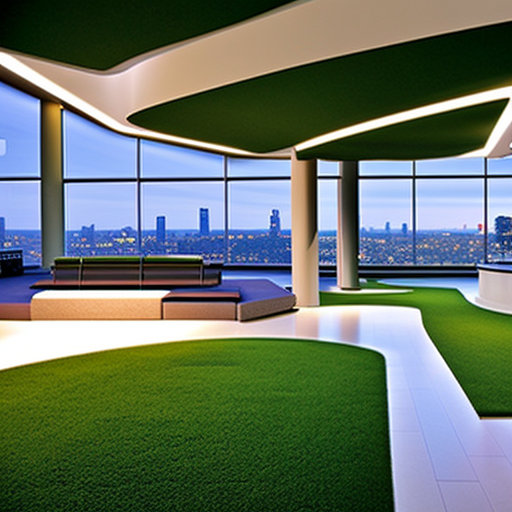Summary:
Green infrastructure refers to the network of natural and semi-natural features, such as parks, forests, wetlands, and green roofs, that provide multiple environmental, social, and economic benefits to communities. It is designed to mimic natural ecosystems and help manage stormwater, improve air quality, enhance biodiversity, reduce urban heat island effects, and promote human health and well-being. Green infrastructure is increasingly being recognized as a crucial component of sustainable urban planning and development.
Benefits of Green Infrastructure:
- Stormwater Management: Green infrastructure helps to manage stormwater by absorbing and filtering rainwater, reducing the risk of flooding and improving water quality. Features such as green roofs, permeable pavements, and rain gardens can capture and store rainwater, allowing it to slowly infiltrate into the ground.
- Air Quality Improvement: Vegetation in green infrastructure helps to absorb air pollutants and release oxygen, improving air quality in urban areas. Trees and plants can filter out particulate matter, reduce the concentration of harmful gases, and mitigate the effects of air pollution on human health.
- Biodiversity Enhancement: Green infrastructure provides habitats for various plant and animal species, promoting biodiversity in urban environments. By creating interconnected green spaces, it allows for the movement of wildlife and supports the survival of diverse ecosystems.
- Urban Heat Island Mitigation: Green infrastructure helps to mitigate the urban heat island effect, where cities experience higher temperatures compared to surrounding rural areas. Vegetation and green spaces provide shade, reduce surface temperatures, and cool the air through evapotranspiration, creating more comfortable and livable urban environments.
- Health and Well-being: Access to green spaces and nature has been linked to improved mental and physical health outcomes. Green infrastructure provides opportunities for recreation, exercise, and relaxation, which can help reduce stress, enhance mental well-being, and promote a healthier lifestyle.
- Economic Benefits: Green infrastructure can have economic benefits for communities. It can increase property values, attract businesses and tourism, reduce energy costs by providing shade and insulation, and create job opportunities in the design, construction, and maintenance of green infrastructure projects.
Examples of Green Infrastructure:
- Parks and Open Spaces: Parks and open spaces, such as urban parks, community gardens, and greenways, provide recreational areas for residents, improve aesthetics, and support biodiversity.
- Green Roofs and Walls: Green roofs and walls involve the installation of vegetation on building surfaces. They help to reduce stormwater runoff, improve insulation, and provide additional green space in urban areas.
- Permeable Pavements: Permeable pavements allow rainwater to infiltrate through the surface, reducing the amount of runoff and improving groundwater recharge. They can be used in parking lots, sidewalks, and driveways.
- Biofiltration Systems: Biofiltration systems, such as rain gardens and constructed wetlands, use plants and soil to filter and treat stormwater runoff, removing pollutants and improving water quality.
- Tree Canopy: Increasing the tree canopy in urban areas provides shade, reduces heat island effects, improves air quality, and enhances the overall aesthetics of the city.
Implementing Green Infrastructure:
Implementing green infrastructure requires collaboration between various stakeholders, including government agencies, urban planners, developers, and community members. It involves incorporating green infrastructure practices into urban planning and development policies, promoting public awareness and education, and securing funding for green infrastructure projects. Additionally, monitoring and evaluation are essential to assess the effectiveness and long-term benefits of green infrastructure initiatives.
Conclusion:
Green infrastructure offers a sustainable approach to urban development, providing numerous environmental, social, and economic benefits. By integrating natural features into cities, green infrastructure helps to create healthier, more resilient, and livable communities. It is a valuable tool for addressing the challenges of urbanization, climate change, and environmental degradation, and should be prioritized in urban planning and development strategies.












